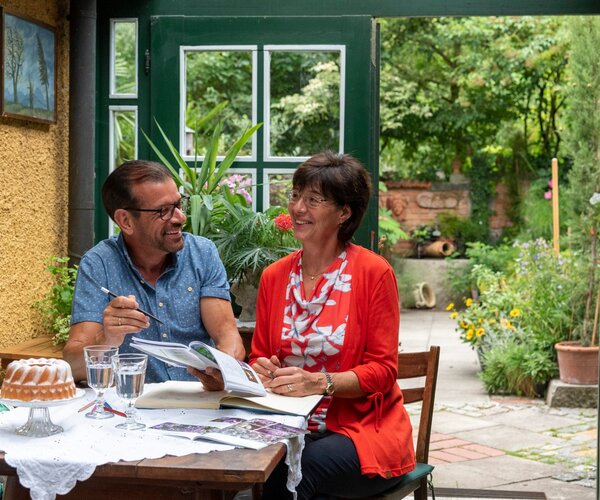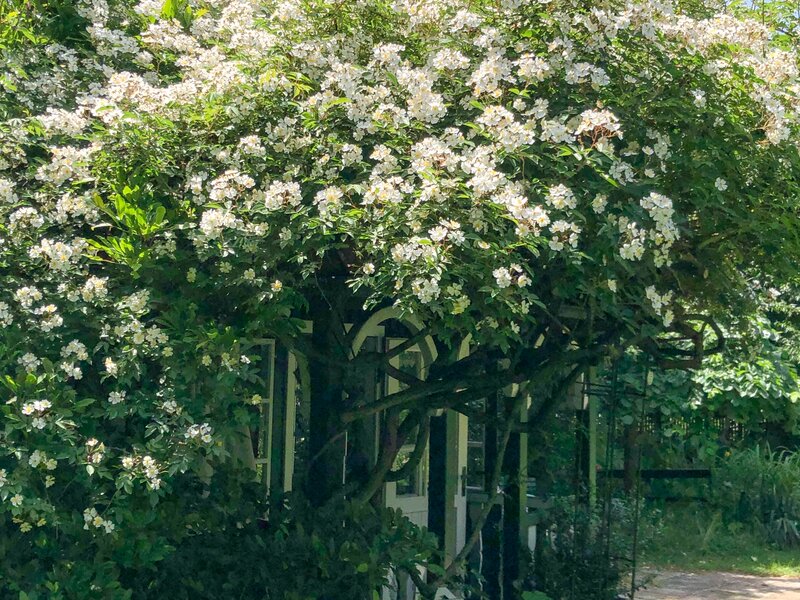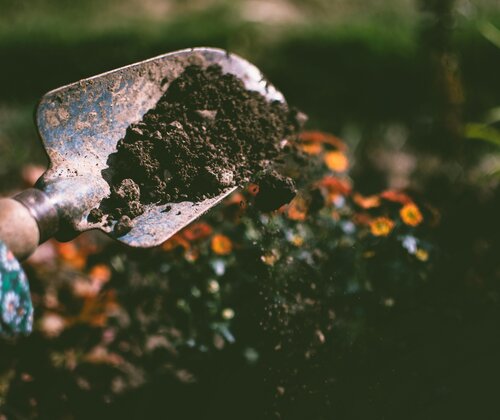
The natural paradise of Karl Ploberger
Anyone entering Karl Ploberger's garden in Seewalchen is in a different world: lush nature that is only "tamed" in some areas and an enormous variety that reflects the credo of Austria's most famous natural garden ambassador: "No matter what you do, always draw on the wide range of plants. That's what ultimately turns a green oasis into a paradise," says Ploberger with a sparkle in his eye.

First the garden, then the house
Karl Ploberger and his wife Ulli have been cultivating a 2400 square metre plot in Seewalchen for 33 years. "It was supposed to be a mixture of a real natural garden and a garden modelled on the British one," says Ploberger. This is because he had travelled to England for the first time at the time and was impressed by the design in the form of garden spaces. The garden is divided into many small and large areas.
He and his wife Ulli always attach great importance to "surprises". She does so with appropriate and never kitschy decoration and he with plants that not everyone has. Right at the entrance, for example, there are two shrubs that Ploberger has made a star of in his hundreds of lectures: the scented hedge cherry and the gingerbread tree. "For me, Lonicera x purpusii, with its fragrant blossoms in late winter, is simply a 'smell'," says Ploberger, still enthusiastic about this planting tip even after many years. Or his gingerbread tree, "a 'child' of my trips to England", he says, "which delights with its silvery green foliage, the huge yellow autumn colours and the moment when the leaves fall off with their intense scent!"
A whole hill full of roses
At the time, it was very important to the two "house builders" that the house was surrounded by greenery and not by concrete or tarmac. The result is the now famous "Waldvilla Karulli" (from the two first names of the owners) in the Salzkammergut style, with a veranda, espalier trees and flower beds around the house.
A small slope was created on the south side (which is now intercepted by a wall) and where lots of historic roses were planted. "If you come to our garden in June, it's probably the most beautiful, because that's when dozens of roses are in bloom. The many rambler roses in particular, which take over the wild shrub hedge and the large trees, are then in full bloom," Ploberger begins to enthuse during the tour, only to immediately slow down again, because "it's perhaps even more beautiful in spring!"
After all, a unique flower bulb paradise has been created in recent years. Ten thousand snowdrops bloom under the free-growing wild shrub hedge. Together with crocuses, bluebells, daffodils and tulips, the result is a splendour of flowers that is indescribable.
At the time, it was very important to the two "house builders" that the house was surrounded by greenery and not by concrete or tarmac. The result is the now famous "Waldvilla Karulli" (from the two first names of the owners) in the Salzkammergut style, with a veranda, espalier trees and flower beds around the house.
A small slope was created on the south side (which is now intercepted by a wall) and where lots of historic roses were planted. "If you come to our garden in June, it's probably the most beautiful, because that's when dozens of roses are in bloom. The many rambler roses in particular, which take over the wild shrub hedge and the large trees, are then in full bloom," Ploberger begins to enthuse during the tour, only to immediately slow down again, because "it's perhaps even more beautiful in spring!"
After all, a unique flower bulb paradise has been created in recent years. Ten thousand snowdrops bloom under the free-growing wild shrub hedge. Together with crocuses, bluebells, daffodils and tulips, the result is a splendour of flowers that is indescribable.
"Especially in the flower meadows, I copied what I saw in England. There, flower bulbs are planted in several layers, which first turn the meadow into an eye-catcher with crocuses, later with daffodils and finally with ornamental leeks," says Ploberger and has already found another new trend plant among the flower bulbs: the camassia, or prairie candles, as they are called in German. "King Charles planted tens of thousands of them in his flower meadows around his country estate in Highgrove!"
This is exactly what he has in common with the royal gardener: a love of nature. He uses a lot of compost throughout the garden ("a good four cubic metres per year"), which he feeds with micro-organisms so that decomposition takes place without turning. In general, Karl Ploberger uses Effective Microorganisms practically everywhere, but especially in his greenhouse.

Vegetable garden - a centrepiece
What would such an organic garden be without the vegetable patches? A colourful mix of everything grows here in lush diversity: a wide variety of lettuces, old vegetable varieties as well as completely new varieties ("I just like to try things out") and so there are always more than a dozen different tomatoes, unusual cucumbers and lots of herbs. So he finally summarises with an old gardening adage: "A garden is never finished!" And you can experience this at first hand in the organic gardener's garden around the Waldvilla Karulli.

Soil is the basis of all horticultural work. It is more than just the soil beneath our feet - it is a living ecosystem that forms the basis for the growth of healthy plants. On a small and large scale, in the garden and in the field. Here you can find out how to determine the type of soil in your garden, what humus is all about and how you can increase the humus content in your soil with the help of simple measures.

Wooden floors are very popular because of their unique look. The sustainable material radiates warmth and naturalness, feels good and grounding and is generally extremely durable. Find out how to take good care of your floorboards and make them shine with the eMC cleaners from Multikraft from our expert Barbara Enengel in our new series "Multiwissen - Barbara's effective tips for every home"
